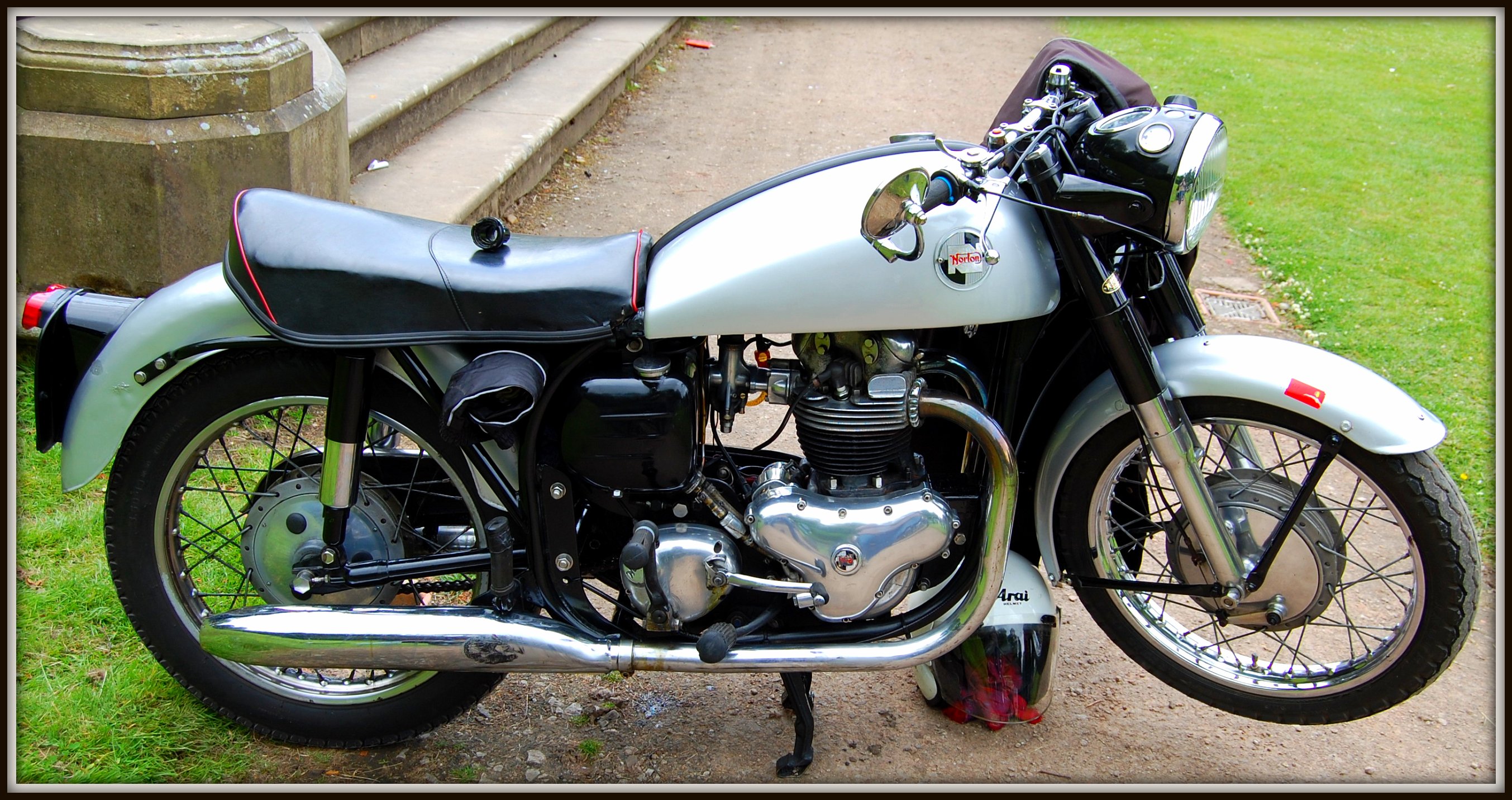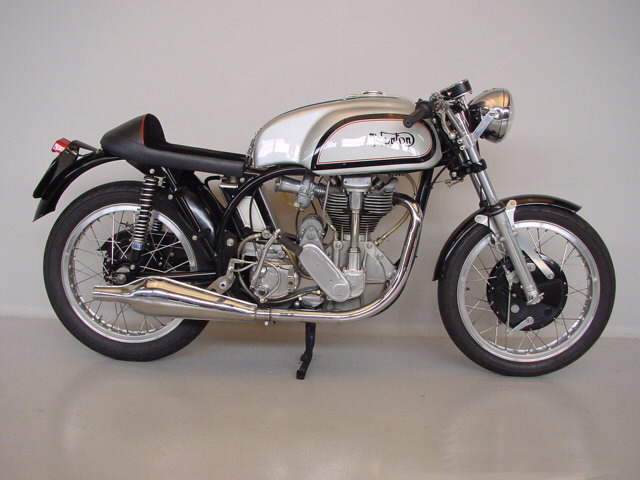|
Norton Manxman
The Norton Manxman was a 650 cc vertical twin motorcycle manufactured by the British Norton Motorcycle Company at their Bracebridge St, Birmingham factory for export. The engine was an enlargement of the 600 cc engine used in the Model 99 Dominator. The Manxman was first shown at the November 1960 Earls Court Motorcycle Show and listed by the American importer, Berliner, in their catalogue from 1961 to October 1962 Berliner had asked for the model to be named ''Manxman'' although the twin had never been raced at the Isle of Man. 630 machines were produced in the first half of 1961 in 3 batches: first, 330 on 13 January, then 150 on 3 March and lastly 150 on 8 June. Of these, 99 were sent to Australia, 25 to Sweden, 1 to the Falkland Islands and the rest to the US. A European-styled version of the Manxman was shown in early 1962 at the Amsterdam International Auto Show and went on sale in April that year as the 650SS. Technical details Engine and transmission The Manxman's ... [...More Info...] [...Related Items...] OR: [Wikipedia] [Google] [Baidu] |
Norton Motorcycle Company
The Norton Motorcycle Company (formerly Norton Motors, Ltd.) is a brand of motorcycles, originally based in Birmingham, England. For some years around 1990, the rights to use the name on motorcycles was owned by North American financiers. From 2008 to 2020, a line of motorcycles was produced under owner and chief executive Stuart Garner. Due to financial failure with large debts, in April 2020 administrators BDO agreed to sell certain aspects of Garner's business to Project 303 Bidco Limited, a new business established for the purpose with links to Indian motorcycle producer TVS Motor Company. The business was founded in 1898 as a manufacturer of "fittings and parts for the two-wheel trade".Holliday, Bob, ''Norton Story'', Patrick Stephens, 1972, p.11. By 1902 the company had begun manufacturing motorcycles with bought-in engines. In 1908 a Norton-built engine was added to the range. This began a long series of production of single and eventually twin-cylinder motorcycles, and ... [...More Info...] [...Related Items...] OR: [Wikipedia] [Google] [Baidu] |
Norton Model 7 Dominator
The Norton Model 7 Dominator was a 500 cc vertical twin motorcycle manufactured by the Norton Motorcycle Company from 1949 to 1955. It was the first of Norton's Dominator range of motorcycles. The engine was designed by Bert Hopwood and was a departure from Norton's previous practice of producing single-cylinder machines. The Model 7 was used in Japan as a police motorcycle. Background In post-WW2 Britain, motorcycle manufacturers were getting back to production of civilian machines following the production of military machines. The British Government had launched an 'Export or Die' campaign to aid the economic recovery from war. Triumph's 1937 Speed twin had been well received and other manufacturers started to design their own 500 cc twins. Having worked under designers Val Page at Ariel and Edward Turner at Triumph, where he assisted with the design of the Triumph Speed Twin, Hopwood was poached by Norton to design a new twin engine. The new Model 7 Dominator, using ... [...More Info...] [...Related Items...] OR: [Wikipedia] [Google] [Baidu] |
Norton Dominator
The Dominator is a twin cylinder motorcycle developed by Norton to compete against the Triumph Speed Twin. The original Dominator was designed in 1947 and 1948 by Bert Hopwood, who had been on the Speed Twin design team at Triumph. Available for sale from mid 1949, this design set the pattern for Norton twins for the next 30 years. Model 7 The first Dominator, the Model 7, had a 497 cc parallel twin engine with iron cylinders and cylinder head and a Lucas K2F magneto. The crankshaft was of 360-degree layout with two main bearings. A single camshaft at the front of the engine was driven by gears and chain. The rocker box was integral with the head, so there were fewer gasket faces to leak and less valve noise. The engine was a long stroke design with bore and stroke and mild tuning, resulting in more torque low down. For the first few years a plunger frame was used, but in 1953 the Model 7 was upgraded with a single downtube swinging arm frame, 19-inch front wheel and 'pear ... [...More Info...] [...Related Items...] OR: [Wikipedia] [Google] [Baidu] |
Telescopic Fork
A telescopic fork is a form of motorcycle front suspension whose use is so common that it is virtually universal. The telescopic fork uses fork tubes and sliders which contain the springs and dampers. The main advantages of the telescopic fork are that (i) it is simple in design and relatively cheap to manufacture and assemble; (ii) it is lighter than older designs using external components and linkage systems; and (iii) it has a clean and simple appearance that bikers find attractive. Telescopic forks sometimes have gaiters to protect the fork tubes from abrasion and corrosion. A more modern (and more expensive) version of the conventional telescopic fork is the inverted or "USD" (upside-down) fork. BMW's patented telelever front suspension appears at first glance to be conventional telescopic fork, but the fork tubes contain neither springs nor damping. Instead, a wishbone and an inboard monoshock perform suspension duties, and the forks serve to locate the front wheel an ... [...More Info...] [...Related Items...] OR: [Wikipedia] [Google] [Baidu] |
Featherbed Frame
The featherbed frame was a motorcycle frame invented by the McCandless brothers and offered to the British Norton motorcycle company to improve the performance of their racing motorcycles in 1950. It was considered revolutionary at the time,"''As opposition companies strove to develop completely new machines with multi-cylinder engines, far more powerful than the Norton single, Bracebridge Street was content to find new speed in 1950 with a revolutionary new frame which steered and handled so superbly that it immediately earned the now forever-famous tag Featherbed''". Sixty Years of Speed, 1967 a ''Motorcycle News'' publication, pp.41-42 Accessed 26 January 2018Motorcycle handling and chassis design: the art and science by Tony Foale. 2006 and the best handling frame that a racer could have."''Introduced in 1950, the featherbed Norton frame, designed by Rex McCandless, of Belfast, became, and still is, the standard by which handling and steering of all racing machines is judged' ... [...More Info...] [...Related Items...] OR: [Wikipedia] [Google] [Baidu] |
Wet Clutch
A clutch is a mechanical device that engages and disengages power transmission, especially from a drive shaft to a driven shaft. In the simplest application, clutches connect and disconnect two rotating shafts (drive shafts or line shafts). In these devices, one shaft is typically attached to an engine or other power unit (the driving member), while the other shaft (the driven member) provides output power for work. Typically the motions involved are rotary, but linear clutches also exist. In a motor vehicle, the clutch acts as a mechanical linkage between the engine and transmission, and briefly disconnects, or separates the engine from the transmission system. This disconnects the drive wheels whenever the clutch pedal is depressed, allowing the driver to smoothly change gears. In a torque-controlled drill, for instance, one shaft is driven by a motor, and the other drives a drill chuck. The clutch connects the two shafts so they may be locked together and spin at the sam ... [...More Info...] [...Related Items...] OR: [Wikipedia] [Google] [Baidu] |
Compression Ratio
The compression ratio is the ratio between the volume of the cylinder and combustion chamber in an internal combustion engine at their maximum and minimum values. A fundamental specification for such engines, it is measured two ways: the static compression ratio, calculated based on the relative volumes of the combustion chamber and the cylinder when the piston is at the bottom of its stroke, and the volume of the combustion chamber when the piston is at the top of its stroke. The dynamic compression ratio is a more advanced calculation which also takes into account gasses entering and exiting the cylinder during the compression phase. Effect and typical ratios A high compression ratio is desirable because it allows an engine to extract more mechanical energy from a given mass of air–fuel mixture due to its higher thermal efficiency. This occurs because internal combustion engines are heat engines, and higher compression ratios permit the same combustion temperature to ... [...More Info...] [...Related Items...] OR: [Wikipedia] [Google] [Baidu] |
Camshaft
A camshaft is a shaft that contains a row of pointed cams, in order to convert rotational motion to reciprocating motion. Camshafts are used in piston engines (to operate the intake and exhaust valves), mechanically controlled ignition systems and early electric motor speed controllers. Camshafts in piston engines are usually made from steel or cast iron, and the shape of the cams greatly affects the engine's characteristics. History Trip hammers are one of the early uses of a form of cam to convert rotating motion, e.g. from a waterwheel, into the reciprocating motion of a hammer used in forging or to pound grain. Evidence for these exists back to the Han Dynasty in China, and they were widespread by the medieval period. The camshaft was described in 1206 by engineer Al-Jazari. He employed it as part of his automata, water-raising machines, and water clocks such as the castle clock. Once the rotative version of the steam engine was developed in the late 18th century, the ... [...More Info...] [...Related Items...] OR: [Wikipedia] [Google] [Baidu] |
Amal Monobloc
AMAL was a British engineering company servicing the motorcycle and other light-engineering motor industries between 1927 and 1993Amalgamated Carburetters Grace's Industrial Guide. Retrieved 2013-07-09 based in . AMAL is a British trademark. Amal was the supplier of carburettors to many marques within the British motorcycle industry including the largest of British manufacturers, such as [...More Info...] [...Related Items...] OR: [Wikipedia] [Google] [Baidu] |
Pushrod
A valvetrain or valve train is a mechanical system that controls the operation of the intake and exhaust valves in an internal combustion engine. The intake valves control the flow of air/fuel mixture (or air alone for direct-injected engines) into the combustion chamber, while the exhaust valves control the flow of spent exhaust gasses out of the combustion chamber once combustion is completed. Layout The valvetrain layout is largely dependent on the location of the camshaft. The common valvetrain configurations for piston engines - in order from oldest to newest - are: * Flathead engine: The camshaft and the valves are located in the engine block below the combustion chamber. * Overhead valve engine: The camshaft remains in the block, however the valves are located in the cylinder head above the combustion chamber. * Overhead camshaft engine: The valves and camshaft(s) are in the cylinder head above the combustion chamber. Components The valvetrain consists of all the compo ... [...More Info...] [...Related Items...] OR: [Wikipedia] [Google] [Baidu] |
1961 Isle Of Man TT
The 1961 Isle of Man TT races, the fourth round of the 1961 Grand Prix motorcycle racing season, involved five races on the Isle of Man TT Mountain Course on the Isle of Man. Three of the races were won by Mike Hailwood. He completed the six laps of the course in 2 hours, 15 minutes and 2.0 seconds at an average race speed of 100.61 mph to win the Senior TT race, after earlier winning the Ultra-Lightweight 125cc and Lightweight 250cc races''Daily Mirror'' page 23 ''GREAT DOUBLE - HAIL MIKE !'' Tuesday 13 June 1991 " Oxford motor cycling star Mike Hailwood and the Japanese Honda team. Mike 21, notched a brilliant double by winning both the 125 and 250cc T T races at record speeds on Honda machines." Phil Read won the 350cc Junior TT race, while Max Deubel and E.Hoerner won the Sidecar TT event. 1961 Isle of Man Lightweight TT 125cc final standings 3 Laps (113.00 Miles) Mountain Course. 1961 Sidecar TT final standings 3 Laps (113.00 Miles) Mountain Course. 1961 Is ... [...More Info...] [...Related Items...] OR: [Wikipedia] [Google] [Baidu] |
Tom Phillis
Thomas Edward Phillis (9 April 1934 – 6 June 1962) was an Australian professional Grand Prix motorcycle road racer. He won the 1961 125cc motorcycle road racing World Championship and was the first person to lap the Isle of Man TT mountain circuit at over 100 mph on a pushrod engined motorcycle. He was also the first person to win a World Championship motorcycle race on a Japanese machine. Personal and early life Phillis was born in Sydney and grew up in Marrickville where his father was a despatch rider. He became a keen bicycle racer, but retired from that sport after a serious crash at Henson Park. After leaving school at 16, Phillis had taken up a motor mechanic apprenticeship. His first experience of motorcycling came with the job, where he had to use a 125cc Excelsior motorcycle to deliver messages around Sydney, and it was there that he began to develop an interest in motorcycles. His father was supportive, and when he was 17, Phillis bought his first bike, a 19 ... [...More Info...] [...Related Items...] OR: [Wikipedia] [Google] [Baidu] |







